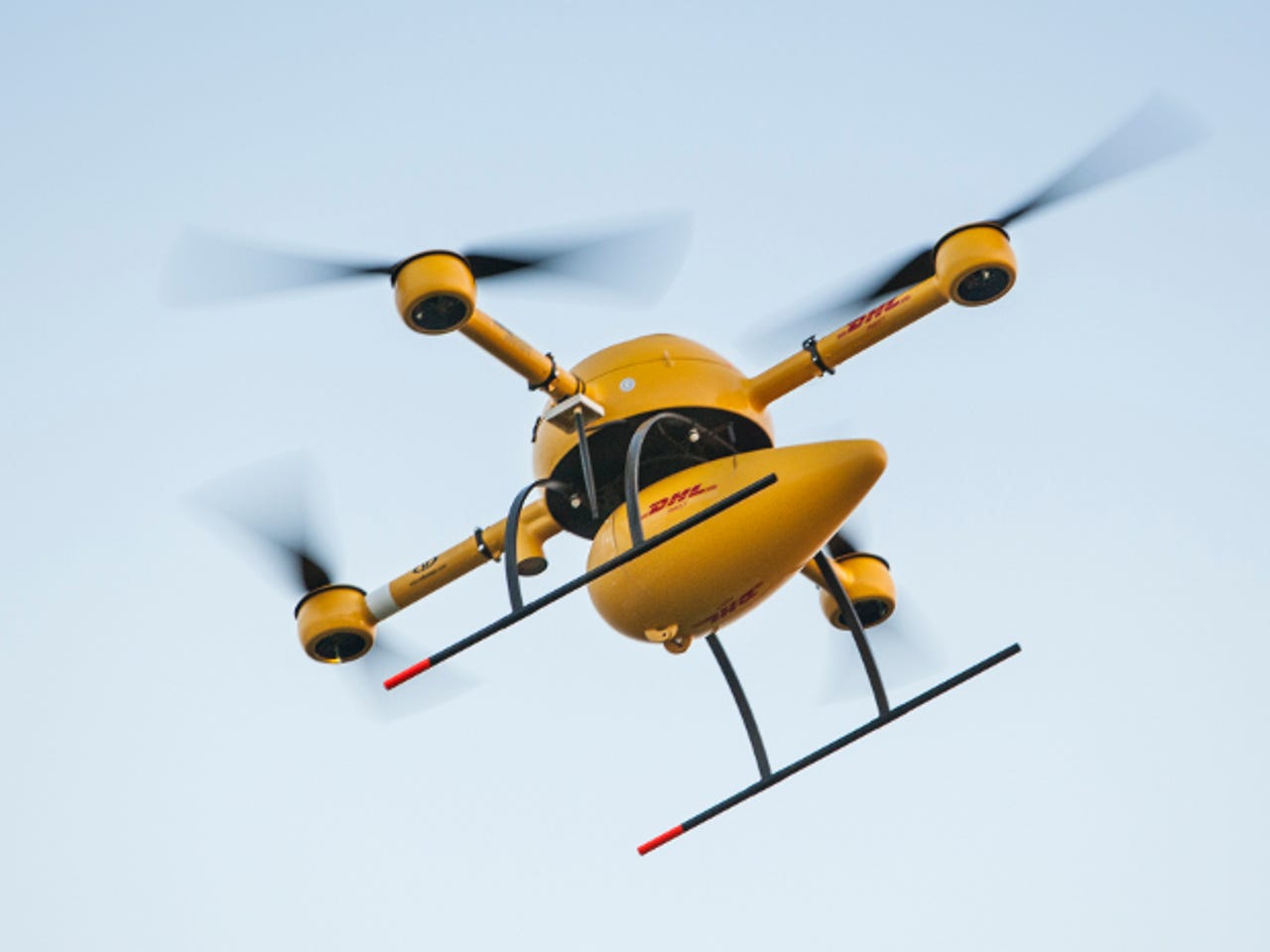Drone delivery is no pain in the Glass: DHL explores new tech to speed parcels' arrival


Google ended commercial sales of its smart glasses at the end of January, after the product failed to capture the imagination of consumers and drew privacy concerns. However, within the enterprise, there's still a potential use for augmented reality. DHL, for one, is looking at ways to use the smart glasses to speed order fulfillment.
DHL recently partnered with one of its clients, electronics company Ricoh, on a pilot project to provide smart glasses to order pickers, the people in the warehouse who fulfill customer orders. Typically, order picking is done using a paper checklist and a scanner: the worker has to use the list to find the location of the product, scan it, and put it in the correct bin, and then check it off a paper list.
"We thought that smart glasses would be the next step because warehouse workers would be able to do all the tasks with one device," Gina Chung, project manager for DHL trend research, told ZDNet.
For the pilot program, ten workers at Ricoh's warehouse in the Dutch city of Bergen used either Google Glass or VuzixM100 headsets to pick orders for three weeks. Software developed by German wearable computing software company Ubimax displayed package order information on the glasses, including location, aisle, and the quantity needed.
During the trial's three-week duration, the ten workers using the smart glasses picked more than 20,000 items, fulfilling 9,000 orders - showing a marked increase in speed as well as a reduction in errors.
DHL estimates that the use of augmented reality increased their efficiency by 25 percent.
Workers reported that they liked using both of types of glasses, even though the Google Glass processor, which sits right at the temple, tends to heat up after long periods of use.
There are other hurdles to more widespread use of smart glasses in this context, including health and safety concerns, since few studies have been done on the effects of long term use of augmented reality. It's also not yet clear how long smart glasses will last in an industrial setting.
Still, Chung described the results of the pilot as "promising", and DHL is now exploring more projects with other partners. "We have a lot of customers interested in doing more on augmented reality in other areas of the supply chain," she said.
The brave new world of delivery
Smart glasses aren't the only technology that DHL is checking out. Trend research has already analysed the potential of big data: using the massive amounts of information the logistics company has to more efficiently deliver packages. This project has already been passed from trend research to DHL's corporate team for possible implementation. While there's no word yet on what might make the cut, its report Big Data in Logistics gives a bit of a flavor - predicting disruption to supply chains, for example, or optimizing delivery routes.
Other studies look even further into a possible future: one that might include self-driving cars and forklifts, and the disruptive effect 3D printing could have on the logistics industry. Imagine, for instance, if everyone had 3D printers in their homes, then products would be downloaded and printed out at home, instead of ordered from a supplier and delivered.
DHL has also considered the potential of having a digital warehouse of high-end printers that could print out products on demand for their customers - an interesting idea, but one that's still a long way off. Chung noted that while 3D printing is possible today, it's still too expensive and time-intensive.
Regardless, DHL plans to keep a close eye on emerging technologies. "If a trend takes off, we want to be ahead of it," Chung said.
Parcelcopter 2.0
One DHL trend research project has already taken off, quite literally. In September 2014, the company started delivering packages to the island of Jurist in the North Sea using a drone, the DHL Parcelcopter 2.0.
DHL first tested its parcelcopter in December 2013, but the team since made further developments to the quadrocopter, extending its flight range and duration. For three months, the drone flew a delivery a 12km delivery route from the town of Norddeich to Jurist, in variable weather conditions. It flew at a height under 50m so as not to interfere with any other air traffic.
While the parcelcopter flights were primarily for research, the drone also served a real world need. The island of Jurist usually receives deliveries by boat, which don't usually run on the weekends or when the seas are too choppy. As a result, residents on the island that needed medication delivered on the weekend often had to wait. The parcelcopter filled this gap, allowing island customers to order medicine that could be delivered by the drone within 30 minutes to an hour.
The drone was grounded for the winter, and DHL is currently evaluating how to fly its drone project further.
DHL's drone project is an interesting achievement not just on a technical level but also on a policy one. The parcelcopter's flight involved the cooperation of government agencies to let the drone fly out of the line of sight of its human operator. The German Ministry of Transport and Digital Infrastructure allowed this by establishing a restricted flight area exclusively for the drone pilot project. This is something that the US's Federal Aviation Administration won't yet allow, and a rule that has stymied the drone ambitions of Amazon and other US companies.
Read more on drones